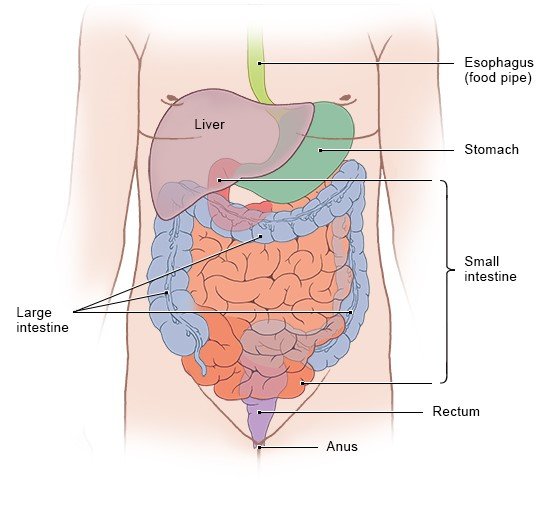How does the intestine work?
The intestine (bowel) is a winding muscular tube extending from the stomach to the anus. Its main purpose is to digest food. But the intestine is not only there for digestion: It also produces various hormones that carry messages to other parts of the body, and plays an important role in fighting germs and regulating water entering and leaving the body. There is a particularly high number of nerves in the wall of the intestine. For some people, the intestine reflects how they are feeling: For instance, they might get a stomach ache, diarrhea or constipation when they are stressed or upset about something.
The intestine has two parts: the small intestine and the large intestine.

